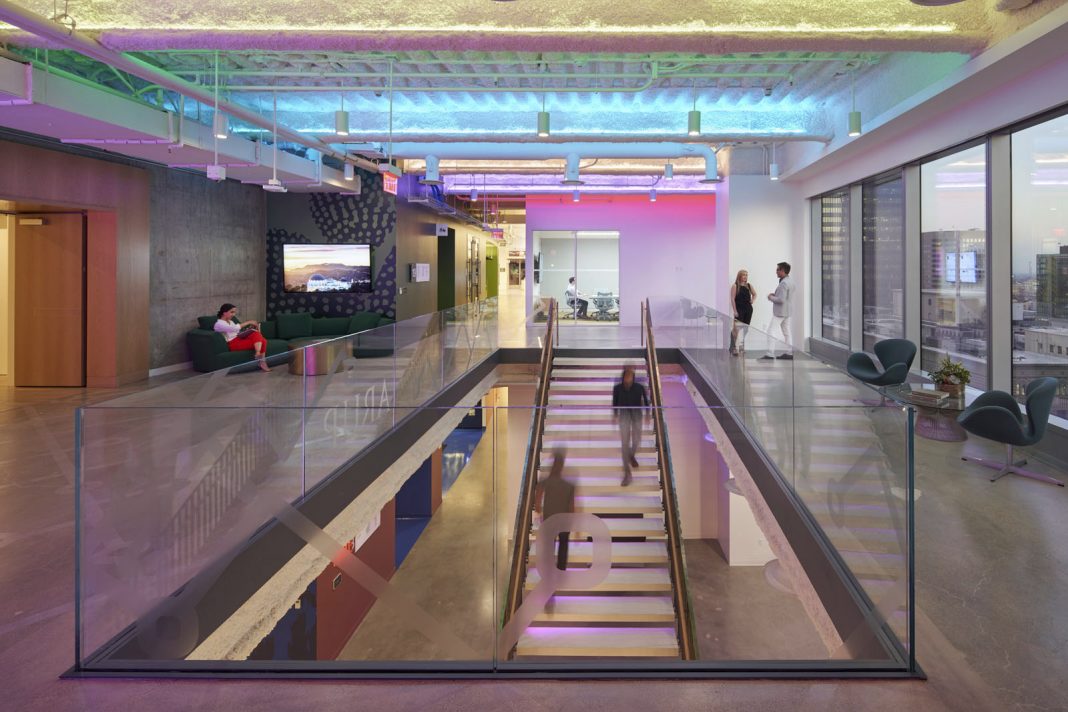In today’s hyper-connected world, technology does more than just enable remote work and global collaboration – it has the power to transform the workplace into a dynamic, inclusive and deeply human experience.
From the moment an employee steps into the office, digital tools can empower them with choice, comfort and connection. By leveraging real-time data, smart systems and sensory design, organizations can create environments that adapt to individual needs, foster wellbeing and inspire creativity. This article explores how thoughtful integration of technology can elevate the user experience and redefine what it means to feel plugged in at work.
Empowering Choice
Upon entering the workplace, digital dashboards and phone apps now have the ability to provide employees with real-time information about teammate locations, resource availability and details regarding a space’s environmental factors, such as lighting, sound temperature levels and more. Need to sit with your team that day? Identify where your teammates are sitting and then meet up. Need to finish up that report? Find a quiet place to focus. Feeling a bit sluggish? Locate the liveliest space in the office.
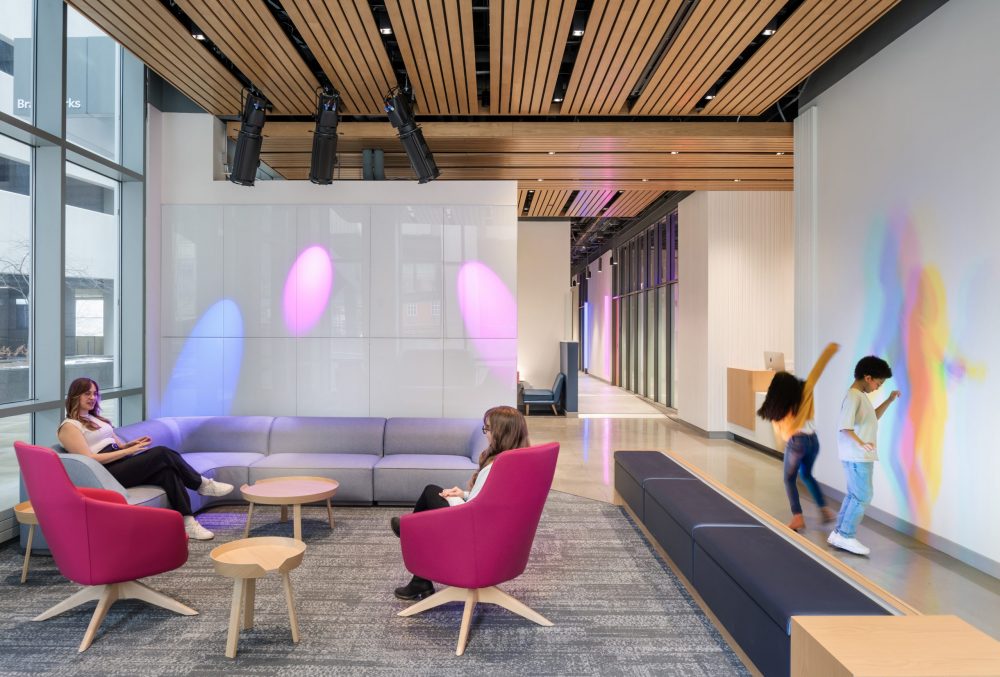
Access to real-time data enables employees to make choices based on their specific needs – not only when they arrive but throughout the day – and empowers them to make the most of their time in the office.
Automated Adaptation
The characteristics of a space naturally shift throughout the day, which can sometimes lead to discomfort or reduced productivity. Smart building systems that monitor and adjust to usage and environmental conditions help maintain a supportive user experience. These systems can regulate lighting to maintain consistent levels or adjust to reflect the time of day, aligning with our circadian rhythms. The same applies to air quality, temperature and acoustics, where sound masking can adapt to the average decibel levels within a space.
Adapting the space to its users has measurable benefits, as research consistently shows that these environmental elements directly impact focus and cognitive performance.
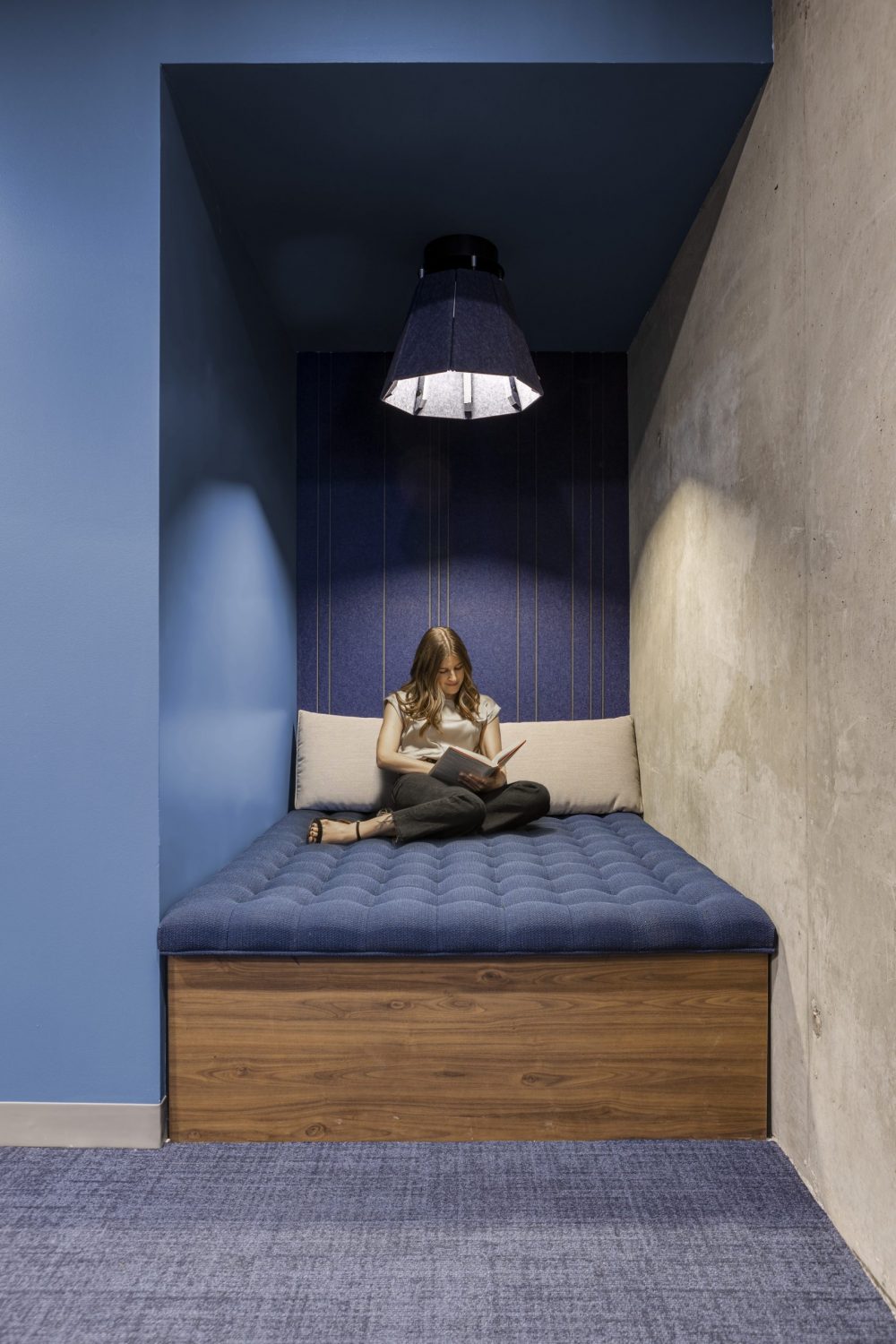
Fully Inclusive
Technology can also be a powerful tool for creating customized and inclusive experiences. Key spaces can be equipped with environmental controls that allow users to tailor their sensory experience by customizing lighting, sound and visual settings to meet their individual preferences. A hypersensitive person may choose calming lights and a peaceful soundscape, while a hyposensitive individual might prefer vibrant lighting, energizing music and visual stimulation to feel most comfortable and productive. With these controls, the same space can flex to suit a wide range of needs and neuro profiles.
Tools and systems can also support inclusivity for individuals with varying physical abilities, language skills and levels of tech comfort. Voice-activated systems enable hands-free interaction with workplace technology (“Hey Siri…”), while AI-driven language translation and transcription can provide real-time access for multilingual teams and hearing-impaired employees. “One-Touch Join” meeting technology not only streamlines the experience but also makes interactions with technology more accessible for those less familiar with digital tools.
Equalizing Meetings
Technology has the power to create inclusive experiences that extend well beyond the physical workplace, especially in hybrid meeting environments. Today’s advanced AV systems are designed not just to connect people, but to equalize their presence and participation. With the right room configuration and tools, every attendee, whether in-person or remote, can enjoy a consistent and engaging experience.
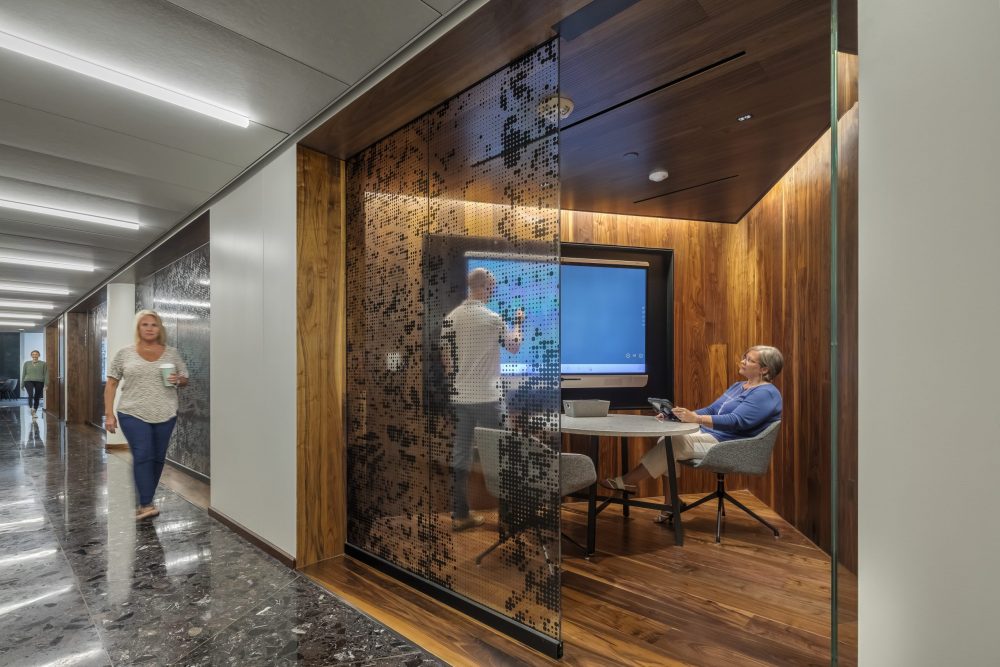
Modern systems make it possible for all faces to be visible and all voices to be heard. Intelligent cameras track and focus on whoever is speaking and automatically adjust as conversations shift across the room and screen. This visual connection helps convey nonverbal cues such as facial expressions, body language and emotional tone to foster empathy and deeper connection. Some systems even incorporate facial recognition to help remote attendees identify who is speaking in the room, further bridging the physical divide.
However, visual presence alone doesn’t guarantee equal contribution. That’s where emerging technologies like extended reality (XR) come in. XR enables remote participants to collaborate in shared virtual environments, interact with 3D models and engage in ways that go far beyond traditional video conferencing. These immersive experiences not only enhance collaboration but also ensure that every voice has the opportunity to be heard.
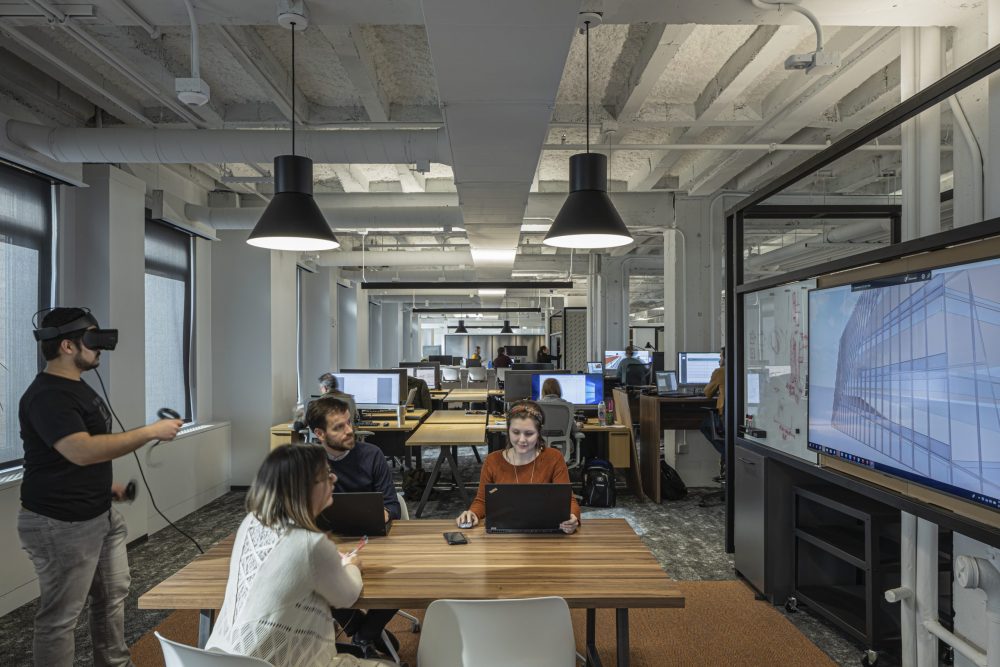
Delighting the Senses
Technology can also foster a sense of awe and wonder by delighting users’ senses. It can help create a vibe – setting the tone, mood and energy of a space through multisensory experiences involving light, sound and visuals.
Soundscaping (the creation of contextual auditory environments) and lighting (through color, brightness and placement) can signal how a space is intended to be used, whether for lively collaboration or quiet contemplation and can also be adapted to reflect themes or events of the day. Adding projections and other visual content can create immersive experiences designed to stimulate creativity, inspiration or even reflection.
Looking Beyond Today
When thoughtfully integrated, technology becomes more than a tool – it becomes a partner in shaping meaningful workplace experiences. From empowering choice and enabling inclusivity to enhancing comfort and sparking creativity, the right tech can help every employee feel seen, supported and inspired. As we continue to reimagine the future of work, let’s consider how technology not only connects us but also how it can empower us to thrive.
Special Thanks to our Tech Fest Supporter:
Let’s design spaces that inspire our best work—and remain flexible to everything the future holds. Explore flooring solutions for 2025 and beyond.

